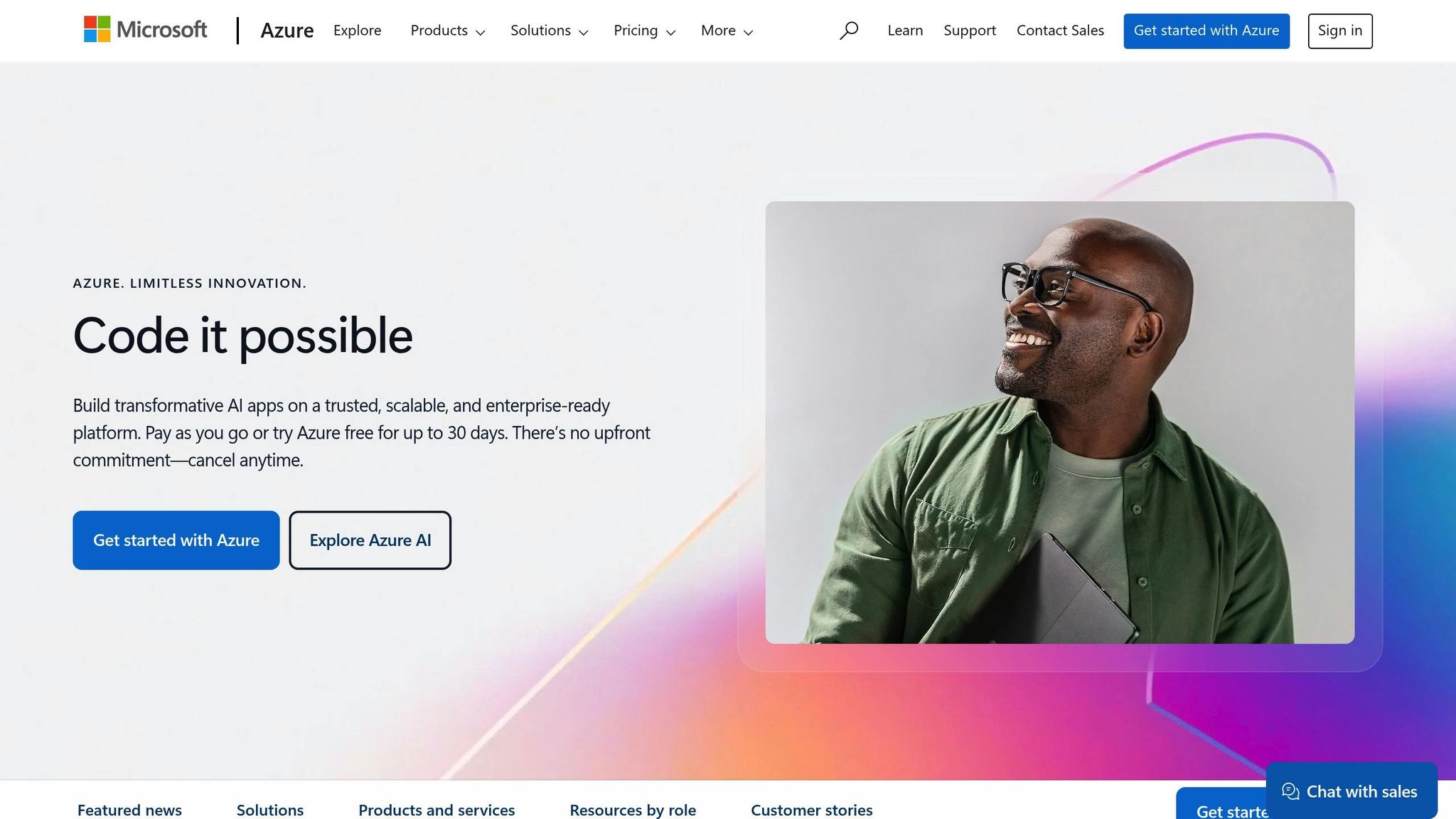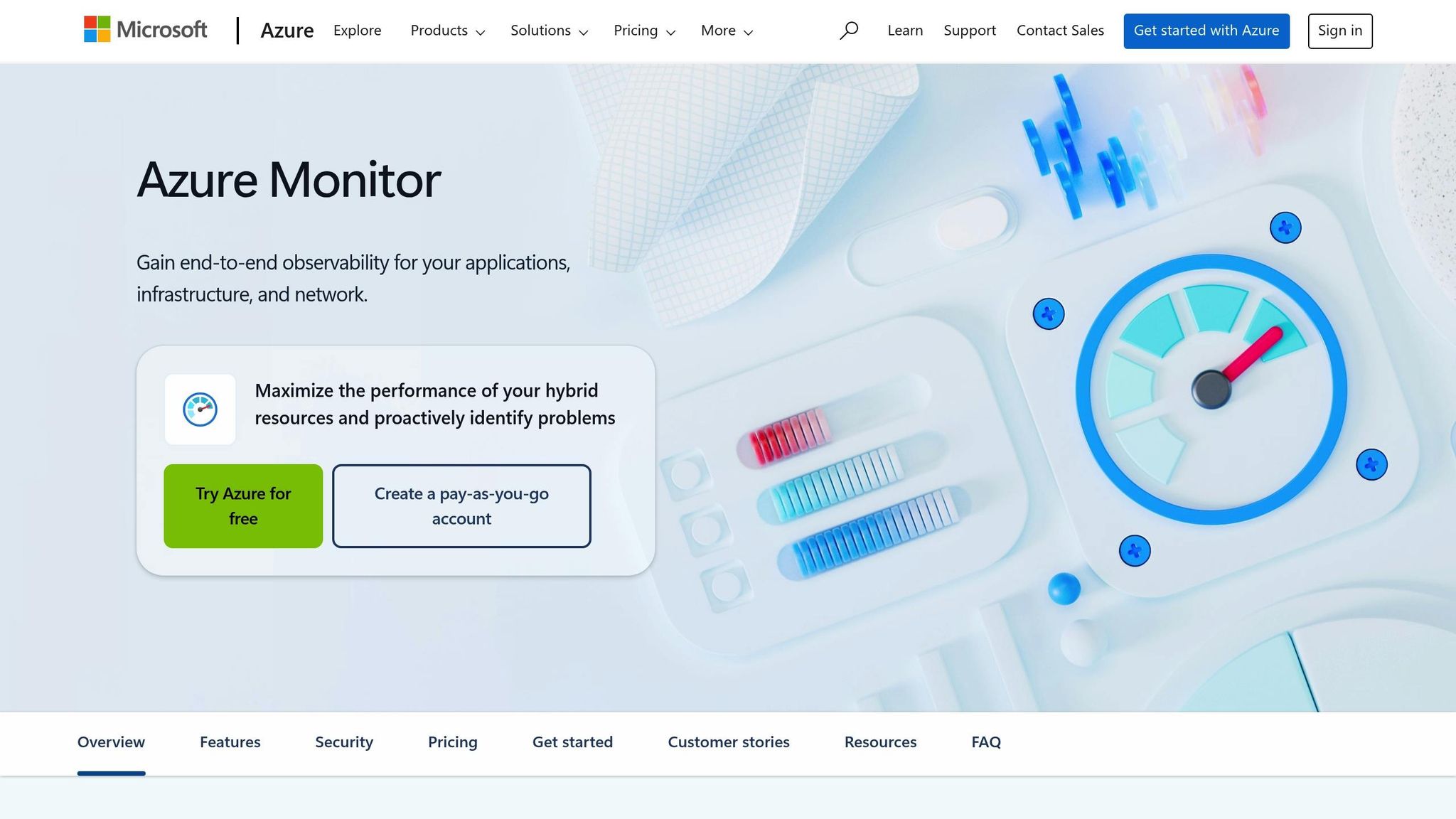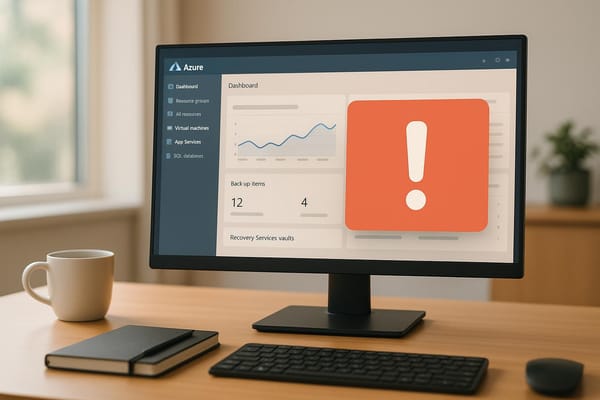Ultimate Guide to Azure Data Security Auditing
Learn how to leverage Azure's auditing tools for data security, compliance, and cost management tailored for small and medium-sized businesses.

Protect your data, stay compliant, and detect risks fast with Azure's built-in security tools. This guide explains how small and medium-sized businesses (SMBs) can use Azure's auditing features to secure sensitive information, comply with regulations like GDPR, and monitor for threats.
Key Takeaways:
- Why It Matters: Azure auditing helps UK businesses maintain GDPR compliance post-Brexit by tracking data access and detecting risks early.
- Tools You Need: Use Azure Monitor, Security Centre, and Sentinel for real-time tracking, centralised management, and advanced threat detection.
- How to Start: Enable auditing for critical resources like databases, set up role-based access controls, and configure alerts for suspicious activity.
- Cost Management: Focus on critical systems, optimise retention periods, and leverage Azure's built-in tools to save money.
- Scalability: Start with essential controls and expand as your business grows, automating tasks to stay efficient.
Quick Comparison of Azure Auditing Tools:

| Tool | Function | Benefit |
|---|---|---|
| Azure Monitor | Tracks activities in real time | Instant threat detection |
| Security Centre | Centralises security tasks | Simplifies compliance |
| Sentinel | Advanced threat detection | Identifies vulnerabilities |
Azure's security auditing tools are scalable, affordable, and designed to meet SMB needs. Use this guide to secure your data, stay compliant, and manage costs effectively.
Azure Monitoring and Alerting Data Source Metrics Audit Logs ...
Setting Up Azure Data Security Auditing
Steps to configure data security auditing in Azure effectively.
Turn On Security Auditing
Start by enabling auditing features for your Azure resources. The configuration process depends on the resource type:
| Resource Type | Key Audit Settings | Recommended Retention |
|---|---|---|
| Azure SQL Database | Database Auditing | 90 days |
| Storage Accounts | Diagnostic Settings | 30 days |
| File Shares | Advanced Threat Protection | 60 days |
Focus on enabling auditing for critical resources first, particularly databases containing GDPR-sensitive information. Then, adjust your audit settings to simplify data collection and access control.
Initial Setup Steps
Follow these key steps to set up your audit environment:
-
Configure Audit Storage
Create a separate storage account for audit logs. This keeps data organised and helps control costs. Adjust retention periods according to compliance requirements. -
Set Up Access Controls
Use Role-Based Access Control (RBAC) to limit access to audit logs to only those who need it. -
Configure Alert Rules
Set up alerts for specific activities like repeated login failures, changes to security settings, or unusual access patterns.
These steps lay the groundwork for a secure and compliant auditing system.
Azure Monitor Setup for Audit Logs

Once your initial setup is complete, use Azure Monitor to manage and analyse logs efficiently:
- Enable diagnostic settings for the resources you plan to monitor.
- Create workspaces to combine logs from multiple resources.
- Define retention periods that align with compliance standards.
Here are some suggested monitoring configurations:
| Monitoring Aspect | Recommended Setting |
|---|---|
| Log Analytics Workspace | 30-day retention |
| Activity Logs | 90-day retention |
| Security Alerts | Real-time |
Security Auditing Standards
Once you've set up your audit settings, it's crucial to enforce strict security measures to safeguard your data assets in Azure.
Protecting Sensitive Data
Keep a close eye on sensitive information like personal and financial records. Use continuous monitoring alongside encryption to secure data both at rest and in transit. Regularly evaluate and update these protections to address new and evolving threats.
Encryption Techniques
Here are two key encryption methods to implement:
- Storage Service Encryption (SSE): Azure automatically encrypts data at rest using established, secure protocols.
- Transport Layer Security (TLS): Activate TLS 1.2 or higher to protect data while it's being transmitted.
Setting Up Alerts
Set up alerts to flag unauthorised access, suspicious data transfers, or major security changes. Leverage Azure Security Center for real-time threat detection and automated responses. This helps you quickly address risks and stay aligned with your security policies.
Applying these practices strengthens your audit processes and helps maintain strong compliance.
Audit Reports and Analysis
Once your audit setup is in place, it's time to dive into the log data to identify potential security gaps.
Reading Audit Log Data
Azure audit logs are a powerful tool for spotting vulnerabilities and keeping track of access. Key areas to monitor include:
- Access Patterns: Look at login times, locations, and frequency to flag anything unusual.
- Resource Changes: Track updates to security settings and permissions.
- Data Movement: Pay attention to transfers involving sensitive information.
- Unsuccessful Access Attempts: Keep an eye on authentication failures and denied access events.
Azure's built-in filtering lets you create custom queries and set up automated alerts. Analysing logs by specific timeframes can help you better understand activity and uncover potential issues. These insights allow you to refine your audit system for better performance.
Make sure your log retention policies align with compliance requirements while managing storage costs effectively. This step strengthens your monitoring efforts and complements your existing audit setup.
For more tips on Azure security and cost management, check out Azure Optimization Tips, Costs & Best Practices.
Cost Management for SMBs
Keeping security auditing affordable while ensuring strong protection is a key challenge for small and medium-sized businesses. Here's how you can manage your Azure audit expenses effectively without cutting corners on security.
Cutting Audit Storage Expenses
Focus on auditing only the resources that are critical to your business. Here's how:
- Configure auditing for essential systems only.
- Set retention periods that align with your compliance needs.
- Use log filtering to capture only the most relevant security events.
- Take advantage of Azure Monitor workspace partitioning to optimise your storage setup.
A smart way to approach this is by categorising your resources based on their security priority. This ensures your audit budget is used efficiently:
| Priority Level | Resource Type | Audit Frequency | Retention Period |
|---|---|---|---|
| Critical | Payment Systems | Continuous | 12 months |
| High | Customer Data | Daily | 6 months |
| Medium | Internal Tools | Weekly | 3 months |
| Low | Test Environment | Monthly | 1 month |
You can also save money by making full use of Azure's built-in security tools.
Leveraging Azure's Built-in Security Tools
Azure comes with a range of built-in security features that can minimise your reliance on third-party tools. These include:
- Azure Security Centre for monitoring your security landscape.
- Azure Policy to enforce compliance standards across your resources.
- Azure Defender for advanced threat detection and protection.
- Azure Monitor for cost-effective audit logging.
For SMBs just starting with cloud security, these tools can often be a more budget-friendly option compared to external solutions.
Scaling Your Audit System as You Grow
When your Azure environment grows, your audit system needs to scale efficiently. Here are some strategies to manage growth without overspending:
1. Start Small and Expand Gradually
Begin with the most critical monitoring controls and expand step by step. This keeps costs manageable while maintaining security.
2. Automate Where Possible
Use Azure Automation to handle repetitive monitoring tasks, cutting down on manual work and saving money as your audit needs grow.
3. Review Costs Regularly
Set up monthly reviews of your audit expenses. Adjust your monitoring strategy based on these reviews to find areas where spending can be optimised without sacrificing security.
For more tips on Azure cost management and security, check out Azure Optimization Tips, Costs & Best Practices. It’s packed with expert advice tailored for SMBs scaling their Azure operations.
Summary
Effective Azure data security auditing brings together compliance, security, and cost management strategies, ensuring data is protected and compliant for small and medium-sized businesses (SMBs).
Built-In Security Features
Azure provides essential protection through its native security tools. This framework grows alongside your business, offering scalable solutions.
Cost Management and Compliance
With strategic audit logging and retention policies, you can balance compliance needs while keeping costs under control.
Real-Time Security Insights
Azure Monitor’s audit logging offers real-time visibility into your security status. This allows you to respond quickly to threats, reducing risks before they affect daily operations.
Flexible and Scalable Design
Azure’s tools support a wide range of needs - from basic monitoring to advanced threat detection - ensuring your security framework evolves as your business expands.
Key Metrics for Azure Security Auditing
| Security Aspect | Recommended Approach | Impact |
|---|---|---|
| Audit Coverage | Prioritise critical systems | Better cost-to-protection balance |
| Data Protection | Use encryption for sensitive data | Enhanced compliance |
| Monitoring | Enable immediate alerts | Faster response to incidents |
| Cost Management | Regularly review audit expenses | Improved control over security costs |
These metrics provide a clear pathway for maintaining strong Azure security. For more tips on optimising your Azure setup and managing costs, check out Azure Optimization Tips, Costs & Best Practices. Use these strategies to keep your data secure while managing expenses effectively.
FAQs
How can UK small and medium-sized businesses ensure their Azure data security auditing complies with GDPR after Brexit?
To ensure your Azure data security auditing complies with GDPR post-Brexit, UK small and medium-sized businesses should focus on a few key steps:
- Understand UK GDPR requirements: Post-Brexit, the UK has its own version of GDPR. Ensure your auditing processes align with the UK GDPR, particularly around data storage, processing, and access.
- Leverage Azure’s built-in tools: Use Azure services like Azure Security Centre and Azure Policy to monitor compliance and identify risks. These tools can help automate auditing and provide detailed reporting.
- Review data residency: Ensure sensitive data is stored in UK or EU data centres to comply with localisation rules. Azure provides options for selecting data centre regions.
- Document everything: Maintain clear records of your data security policies, audit findings, and corrective actions. This documentation is essential for demonstrating compliance during inspections.
By combining Azure’s capabilities with a strong understanding of UK GDPR, SMBs can effectively secure their data while remaining compliant.
What are the best practices for using Azure's built-in security tools to optimise costs for small and medium businesses (SMBs)?
Azure provides several built-in security tools that can help SMBs enhance data protection while keeping costs under control. To optimise your setup, start by enabling Azure Security Centre and configuring it to monitor your resources. This tool provides tailored recommendations to strengthen your security posture and avoid unnecessary expenses caused by misconfiguration.
Additionally, make use of Azure Policy to enforce compliance across your environment and prevent costly security breaches. Regularly review your resource usage reports to identify underused services and adjust accordingly. For more advanced insights, consider enabling Azure Monitor to track activity and detect anomalies without over-provisioning resources.
By following these best practices, SMBs can improve security while maintaining a cost-effective Azure environment tailored to their needs.
How can businesses use Azure Monitor to detect and respond to security threats in real time?
Azure Monitor enables businesses to track and respond to potential security threats by providing real-time insights into their cloud environment. By setting up log analytics, alerts, and visual dashboards, organisations can identify unusual activity, such as unauthorised access attempts or unexpected data transfers.
To enhance security, businesses can configure custom alerts that notify teams immediately when certain thresholds or conditions are met. For example, you can set alerts for failed login attempts or unusual spikes in network traffic. These alerts can be integrated with tools like Microsoft Sentinel to automate responses or trigger workflows for rapid mitigation.
By leveraging Azure Monitor's analytics and reporting features, businesses can proactively safeguard their data and maintain compliance with industry regulations.




